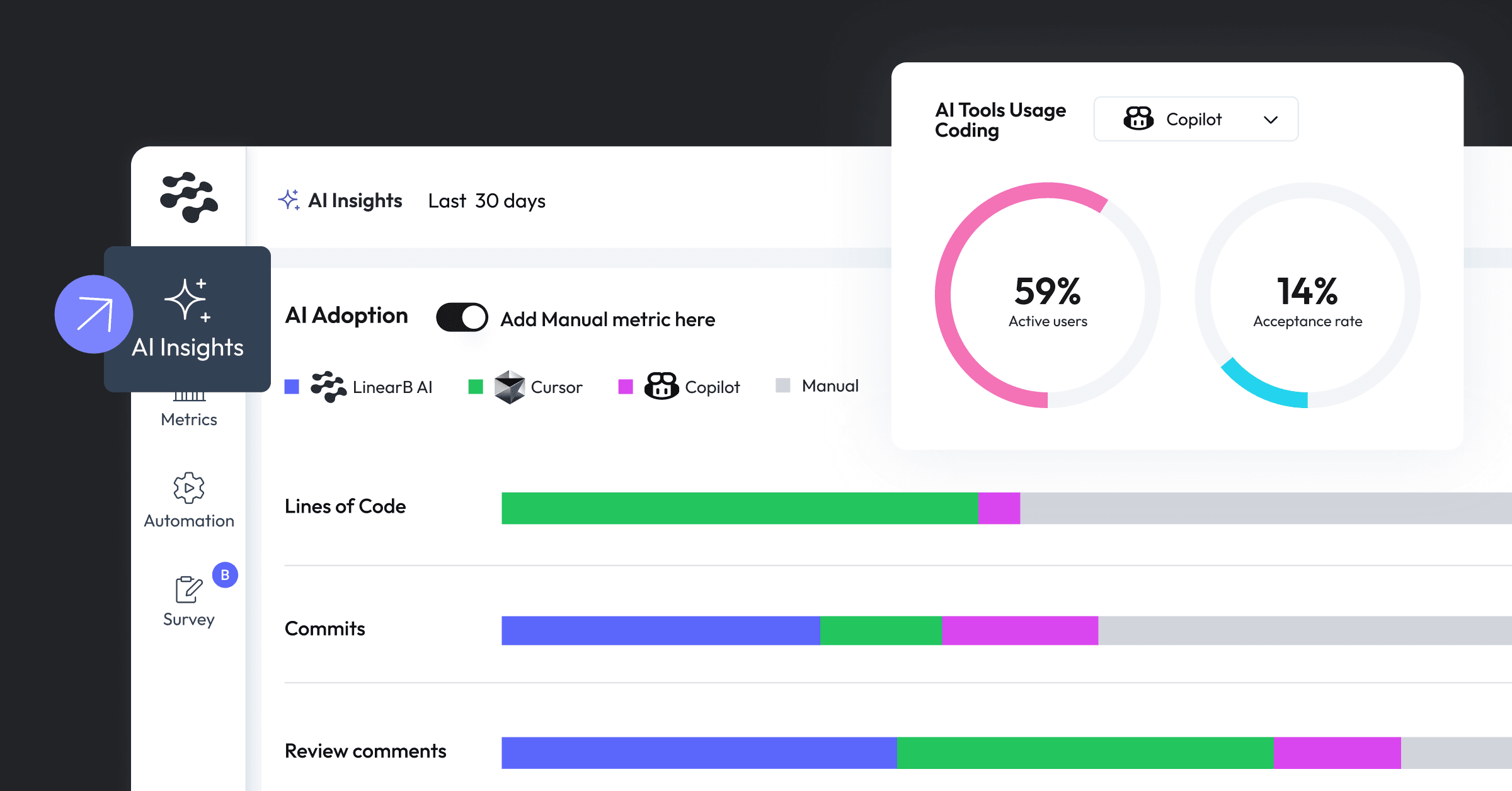Engineering Leader's Guide to Goals and Reporting
A culture of Continuous Improvement is built on a foundation of data-backed goal setting. In this comprehensive walkthrough, you’ll learn to:
Set unified operational and business goals at the team and organization level
Use dashboarding and programmable workflows to align teams and drive results
Build clear reporting for goal attainment and strategy that’s tailored to your audience
Engineering Leader's Guide to Goals and Reporting
Download your free copy

Don’t Start an Improvement Journey Without Charting a Course
Without clear, data-backed goals, companies – regardless of industry vertical, size, or structure – cannot compete. When an engineering team (or entire organization) doesn’t have clear operational and business goals:
Misalignment becomes commonplace
Performance, productivity, and value are diminished
It’s impossible to build a culture of accountability and ownership

Start with Org-Level OKRs
Goal setting should be done at the highest level first. Compile the most fundamental metrics for your whole organization–DORA metrics, leading indicators, and resourcing allocation are good places to start.
Use industry benchmarks to understand your current performance and see how far you have to go. You can then set org-wide goals like Reducing Cycle Time by 10% across all teams.

Move to Team-Level Goals
Once you’ve set and communicated organizational goals to engineering managers, they can work with their reports to set team goals that ladder up to org-level OKRs. For example, if the organization wants to improve quality, the team with a higher-than-average CFR should set a goal to reduce it.
Just like the previous step, teams should:
Investigate team metrics
Identify bottlenecks
Set 1 or 2 team-level improvement goals

Use Dashboards and Automation to Keep Teams Aligned to Goals
Now that everyone is informed of the mission(s) at hand for the org and individual teams, it’s time to (1) build team goals dashboards that all stakeholders have access to and (2) set up automated workflows to help you achieve those goals. Ensure dashboards include all of the metrics you’ve set improvement goals against. And incorporate automation that both reminds teams of goals they’re working toward and removes friction points in the developer pipeline.

Reporting on Goals, Successes, and Further Opportunities
The final step is to report progress on improvement initiatives with business leaders and your engineering organization. Be sure to tailor your read out for each audience.
For business stakeholders your role is translator– that means putting all your data in terms of relevance to and impact on the business.
For engineering stakeholders, feel free to dive into technical details, project operations data, specific branches or PRs that are impacting metrics, and progress against goals. Always remember to celebrate successes and remind your team this is about mentoring, not monitoring.
Then you can start the process all over again!

Download Your Free Copy

More resources

Report
2026 Software Engineering Benchmarks Report
Created from a study of 8.1+ M PRs from 4,800 engineering teams across 42 countries.

Workshop
2026 Benchmarks Insights
Explore new AI insights from the 2026 Software Engineering Benchmarks Report – backed by 8.1M+ PRs across 4,800 engineering teams and 42 countries.

Demo
Understand AI adoption and developer impact with the AI Insights Dashboard
This demo guides you through the AI Insights Dashboard, demonstrating how to track and analyze trends in AI tool adoption, rule coverage, and code quality....